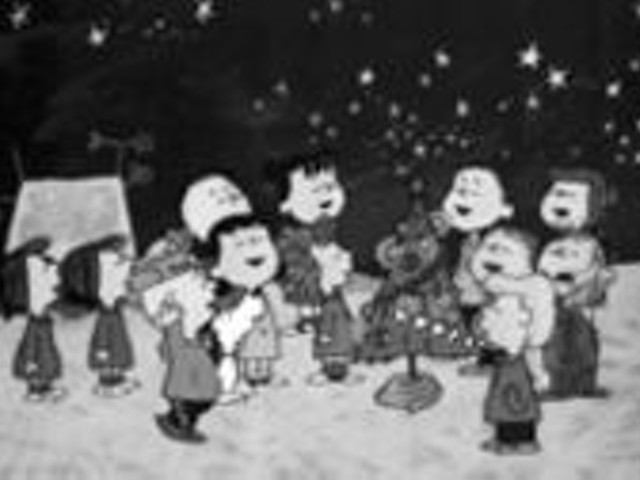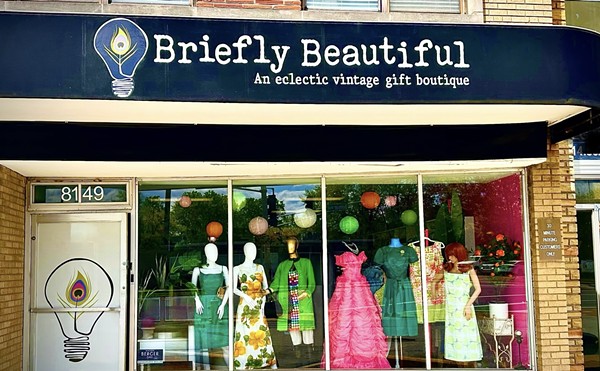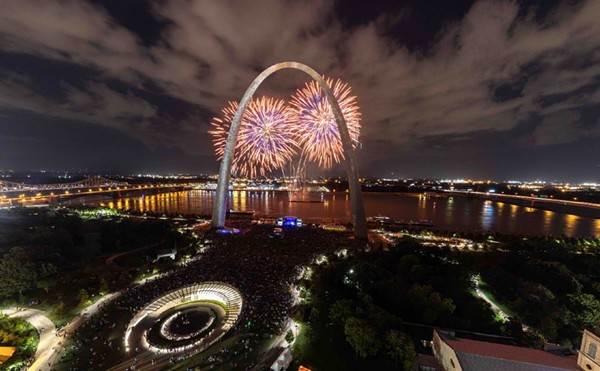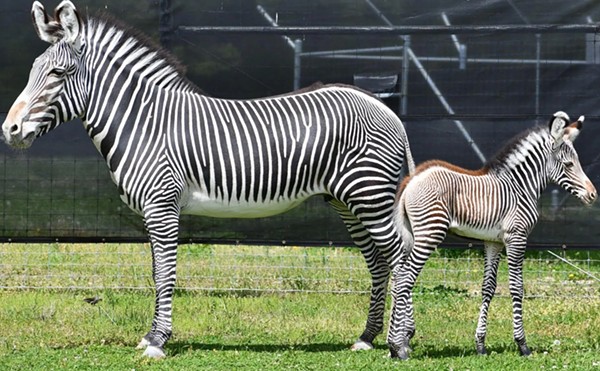Upstairs, in the museum restaurant, another group of families gathers at a luncheon for those who contributed to a long succession of meetings, interviews and discussion groups over the last two years, culminating in the exhibition We Will Survive/Prezivjet Cemo, a telling of the remarkable ongoing history of refugees who escaped war-torn Bosnia-Herzegovina and came to St. Louis in the last decade. The exhibition inaugurates the new Community Partners Gallery, an effort by the museum to involve nonhistorians in the business of history.
The story of Bosnians in St. Louis makes for a dramatic starting point. The refugees from Bosnia-Herzegovina have survived the horrors of the Balkan war -- all have suffered devastation of domestic life, all have lost family and friends, all have been witness to the unspeakable -- and find themselves in St. Louis, making a living, getting the kids to school, seeking stability in the aftermath of chaos. Few stories could be as poignant or as complex.
Those who have participated in the telling and sifting of those stories settle around tables in the restaurant. Among them are Adnan Jasarevic and his wife, Senada, both dressed elegantly, dapper Europeans at a formal occasion. In the exhibition, Jasarevic's voice is heard on audiophone describing his journey to St. Louis, his odyssey a treacherous maze that sent him from his native Brcko to Germany to a city in the middle of America. Jasarevic is a thoughtful, inquisitive man who now works out of an office in Creve Coeur for the Aetna insurance company. On this day, his thoughts turn to cemeteries.
"You can learn a lot about a place by its cemeteries," he says. For example, if cemeteries are divided between Catholic and Protestant, say, or black and white, and are spread at a distance from one another about a city, it's a sign of a divided community -- his theory being that if people cannot come together in the equality of death, there must be a pressing burden of injustices and grievances in life.
In Jasarevic's native land, where, just a decade ago, before the war, Muslims, Jews and Christians of various orthodoxies lived in peaceful coexistence, their dead shared the same acreage as well. That is past, though: The Bosnia-Herzegovina of the present lacks such harmony.
Jasarevic brings up another custom involving the dead, how the tradition in his homeland is for a woman to never visit a grave. "My mother never went to a cemetery until her own funeral," he says.
It seems a funny comment, and those around the table smile, until Jasarevic amends his observation: "She was killed."
The conversation does not stall, however. It meanders into a discussion of how Bosnian traditions are slipping away in America, of recent elections in Serbia and the U.S., of Jasarevic's brother's work habits, of how the Bosnian fare concocted by the caterer would be made complete with helpings of sour cream.
When Jasarevic is asked whether he saw a recent article in DoubleTake magazine about Bosnians in St. Louis, written by Patrick McCarthy -- the St. Louis University librarian who has devoted much of his life to the Bosnian people and was the initiator of We Will Survive and its companion text, After the Fall: Srebrenica Survivors in St. Louis -- he looks slightly aggrieved. He shakes his head: "There have been so many articles ..." It's a telling comment, one that implies that the community is growing tired of its specialness. No doubt the Bosnians have benefited from the media attention they've attracted, but for all they've experienced, and all the struggles that continue, the banality of everyday life would not be an unwelcome prospect.
For today, though, We Will Survive is to open. The Community Partners Gallery is adjacent to the hall containing World's Fair memorabilia, an apt juxtaposition for this exhibition: two moments in history, at the beginning and the end of the century, when the world came to St. Louis and St. Louis become more conscious of worlds beyond. At least 100 people are gathered near the entryway as McCarthy speaks of how "we are here to celebrate what was preserved" but admonishes us "not to forget, and remember what was lost." He calls for a moment of silence.
Mina and Hanifa Jasarovic -- sisters with shoulder-length brown hair, wearing identical purple-striped sweaters -- emerge from the crowd to cut a red ribbon. As they do, in a corner of the World's Fair exhibit, where a video loop runs continuously, an image of another girl, this one auburn-haired, appears on a small screen: It is Judy Garland in The Wizard of Oz, mouthing, "There's no place like home. There's no place like home." The girls complete the ribbon-cutting, and McCarthy invites the crowd to enter, but there is a hesitation -- no one moves. "Lzvolite," he says, and with some laughter, the Bosnians in attendance, hearing "Please, come in" in their native tongue, file into the exhibition space.
We Will Survive tells the story of a paradise lost, without the reassurance of paradise subsequently regained. Bosnia before the war is depicted as an idyllic cultural crossroads, a place where, as one bit of text informs the museumgoer, a muezzin's call could be heard in the shadow of a Franciscan church even as a Slavonic chant emanated from a Byzantine cathedral. It was a place of merhamet, a perhaps-untranslatable word that relates to hospitality and friendship, to the conversation and sharing of coffee and food and cigarettes that binds people together. A place both respectful of traditions and proud of its modernity, as in the 1984 Sarajevo Olympics, represented here with photographs and memorabilia.
As you turn a corner, a coil of barbed wire descends from the ceiling and the ski slopes for the Olympiad become hideouts for snipers. The cultural crossroads becomes a cultural divide. In a section separated from the rest of the gallery by a dark scrim, exhibition designer Margaret Koch has layered images of the war, images of the Jasarovic family secure in their South City home and text of the harrowing narrative of the family's escape from the Srebrenica killing ground. Here are the adorable Mina and Hanifa, one turning cartwheels, the other scrunched up in a chair; and their father, Juso, in a rather benign portrait of a regular guy, juxtaposed with his account of genocide: "There were bodies all over. Body upon body."
The exhibition subtly, without the taint of facile theatricality, begs that connections be made among the American success stories, the Srebrenica horrors and the longing that remains for a Bosnia that is no more. There's no place like home, yet, as the exhibition shows, the children of the Bosnian diaspora swiftly, exuberantly embrace the America they know, not the homeland their parents remember. The exhibition, depicting as it does an ongoing story, does not resolve these conflicts with the happy ending of American assimilation. Rather, these artifacts reflect the push-pull between hope and remembrance, the demands of the living and the silence of the dead.
The small gallery is filled with people, mostly members of the Bosnian community. For the most part, they read the text on the walls and examine the photos and artifacts with a quiet intensity. Then, when they have finished the narrative sequence of peace, war and war's aftermath -- all of which they have experienced in so many individual ways as to fill any number of galleries -- they reconnect with friends, talk, laugh on this holiday weekend. They wander back out to the museum's north entrance, where, beneath the statue of Thomas Jefferson, musicians have set up and now start into a polka beat.





